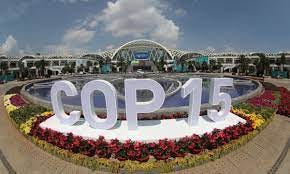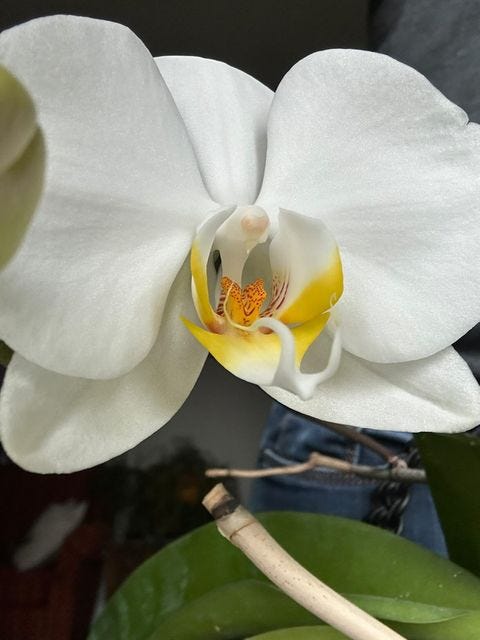Hello, friends. As we sit in the second week of Advent, what is bringing you peace right now? Please, let me know, and I will share the answers (anonymously) in next week’s newsletter. jessica@jessicahetherington.ca
Today begins COP15, the UN Convention on Biodiversity. Being held in person in Montreal, it is the second part of a larger convention begun online earlier this year in China. A wide diversity of topics related to global biodiversity will be covered, with the intention of setting new collective goals for protecting the natural world, ensuring equitable access to a sharing of the Earth’s bounty, and dealing with issues such as pollution, pesticide use, climate change, and more. The ultimate goal, according to the UN, is to prevent biodiversity loss. As Elizabeth Maruma Mrema, executive secretary of the Convention on Biological Diversity, says, the food we eat, air we breathe, and water we drink all come from the biodiversity of the planet.[1] I will be following the news coming out of COP15 closely.
The fact is that, while climate change is the most prevalent aspect of the ecological crisis in the headlines today, and indeed absolutely must be confronted with the utmost urgency, it is only one part of a complex ecological crisis in which one aspect of Earth devastation impacts upon another. The climate crisis is, in fact, a part of a larger crisis, a symptom of that which rages across the planet and affects absolutely every area of Earth functioning. COP15 is one example of the recognition that there are other, connected, aspects of the ecological crisis to be addressed today.
Yet, while COP15 is important for discussing the use of pesticides, equitable sharing of ‘natural resources,’ and discussing eco-tourism, and COP27 was so important (yet so disappointing in its results) in talking about how to address climate change, there is something else about these issues that must be addressed. At multiple forums in town halls and church basements, in community centres and around the dinner table, we need to begin to have sustained conversations about a terrible dysfunction that exists within the roots of the ecological crisis; a deep, pathological distortion of the human relationship with the rest of the natural world.
At the same time that we are addressing issues such as biodiversity loss and climate change, we need to be talking about the way in which our worldviews, the collective stories about how we understand who we are, where we have come from, and where we going, have caused such deep, lasting, and in many cases, permanent harm to the Earth community and its human and other-than-human inhabitants.
These worldviews are complex, and are formed through many aspects of human community, including social, political, and religious narratives.
This is where the role of religion is valuable, where theology has a place in those conversations. The question of worldview, of how we understand human beings, the world, and our relationships between us and the world, is, fundamentally, a religious question. What do we believe, what language do we use to express what we believe, and how do we act out our beliefs in the world? How have we come to define the Holy in that context? And what are our responsibilities, especially as the evidence comes to us from all sectors about how our beliefs, our language, and our actions affect ourselves, the world, and each other? How have our own religious traditions contributed to the distorted worldviews at play in the ecological crisis today, and how can these same traditions help us to tell new stories, offer alternative worldviews, healing ways of understanding ourselves, the world, and the Holy, and move us toward Earth healing?
This is the work that I do, to facilitate conversations such as these. As COP15 begins tomorrow, and as we watch the headlines regarding the extinction of species, climate change, and more, let us have these conversations with one another. And if I can help, please let me know.
[1] https://www.cbc.ca/news/science/what-is-cop15-biodiversity-summit-1.6673003. Accessed December 6, 2022.
Advent Reflection
Advent 2: The Cosmic Energy of Waiting
Comfort, O comfort my people,
says your God.
2 Speak tenderly to Jerusalem,
and cry to her
that she has served her term,
that her penalty is paid,
that she has received from the Lord’s hand
double for all her sins.
3 A voice cries out:
‘In the wilderness prepare the way of the Lord,
make straight in the desert a highway for our God.
4 Every valley shall be lifted up,
and every mountain and hill be made low;
the uneven ground shall become level,
and the rough places a plain.
5 Then the glory of the Lord shall be revealed,
and all people shall see it together,
for the mouth of the Lord has spoken.’
9 Get you up to a high mountain,
O Zion, herald of good tidings;
lift up your voice with strength,
O Jerusalem, herald of good tidings,
lift it up, do not fear;
say to the cities of Judah,
‘Here is your God!’
10 See, the Lord God comes with might,
and his arm rules for him;
his reward is with him,
and his recompense before him.
11 He will feed his flock like a shepherd;
he will gather the lambs in his arms,
and carry them in his bosom,
and gently lead the mother sheep. (Isaiah 40:1-5, 9-11, NRSV)
Faithfulness will spring up from the ground,
and righteousness will look down from the sky. (Psalm 85:11, NRSV)
During Advent, we are asked to wait. We are asked to wait for new life that is being promised to us. Mary was told that new life would come forth from her, and she was asked to wait. This kind of waiting, this holy waiting, was known to God’s people. Here in the Scripture texts from Isaiah and Psalm 85, God’s people are asked to wait. They are promised that every valley will be lifted up, every mountain laid low, and that the glory of the Lord will be revealed. They are promised that faithfulness and righteousness will be in abundance!
We are promised these things, too. The words in Isaiah and Psalm 85 are spoken directly to us, and the new life promised to Mary is the new life we are waiting to come into the world.
The cosmos knows a lot about waiting, too. The emergent universe, begun in an exquisite moment of time and space 13.8 billion years ago can be perceived as an Advent, a preliminary Advent born out of a waiting that was in God, as God waited to bring existence into being so long, long ago. And since then, the cosmos has waited, again and again; for the development of galaxies, and the birth of the planets, especially Earth. Then the cosmos, and the Earth itself, waited for the birth of life to begin. And then, through evolution, the birth of new and ever more complex forms of life, and ways of life to create and procreate.
Inside all of this waiting, inside the waiting of our faith ancestors, and Mary’s waiting, and our waiting today, is an energy. It is a cosmic energy, literally the same energy that existed within the universe in all of its waiting moments, too. Remember the story in which Mary met with Elizabeth to celebrate their pregnancies, and the baby in Elizabeth’s womb danced when meeting the baby in Mary’s womb? There was an energy building inside both of them, and that energy met and recognized the other. Mary was carrying a holy energy, and it could be felt. This is the energy of stardust, of primal elements dancing and mixing together, of moving forward and out in greater and greater complexity, creativity, and love. This is a holy energy.
This is the holy energy that exists within the cosmos, within the emergent universe. Although Mary wouldn’t know the science in her day (and really, most of us aren’t aware of it now, either), the fact is that the energy that existed inside of Mary, knitting together into the body of Jesus, was this very same energy. The energy that burst forth at the moment of the Big Bang; the energy that gave rise to the Earth and later, to new and ever evolving life; that is the same energy that Mary was told would be in her, that she could feel and celebrate. That is also the energy that is promised in the Scripture readings, above. It is the energy of stardust, of primal elements, of greater complexity and love.
The birth of Jesus into our world was and is that same cosmic energy; it is the energy of God, manifesting in new, unique, ever evolving ways of creation and complexity, of love and diversity. We wait, during Advent, with this energy building, yet again. Yet again this Advent, we have the chance to feel, to experience that energy anew, within our own lives, within our own experiences. We, like our faith ancestors, like Mary and Elizabeth, we wait, feeling the energy that burst forth 13.8 billion years ago, within our bodies, within our very cells. We wait, feeling the holy energy of stardust, of creativity, of love.
And as we wait, with and inside and as a part of the cosmos itself, we wait for that ultimate time, that time that Jesus has promised, when God’s energy will come again in the fullness of God’s reign, to a time of fullness and completion. That, too, will be a cosmic energy. A holy energy that will be stardust and creation, love and fulfilment, come from those first moments, so long, long ago.
Earth Community in Pictures
Subscriber Debbie McMillan posted gorgeous photos of her orchids in bloom now (Debbie, how do you grow such beautiful flowers??). She graciously agreed to let me share them with all of you. I invite you to gaze upon these pictures (you can click on them to make them larger), and allow their beauty, and their uniqueness as God's good creation, to fill your heart and bring you peace.






